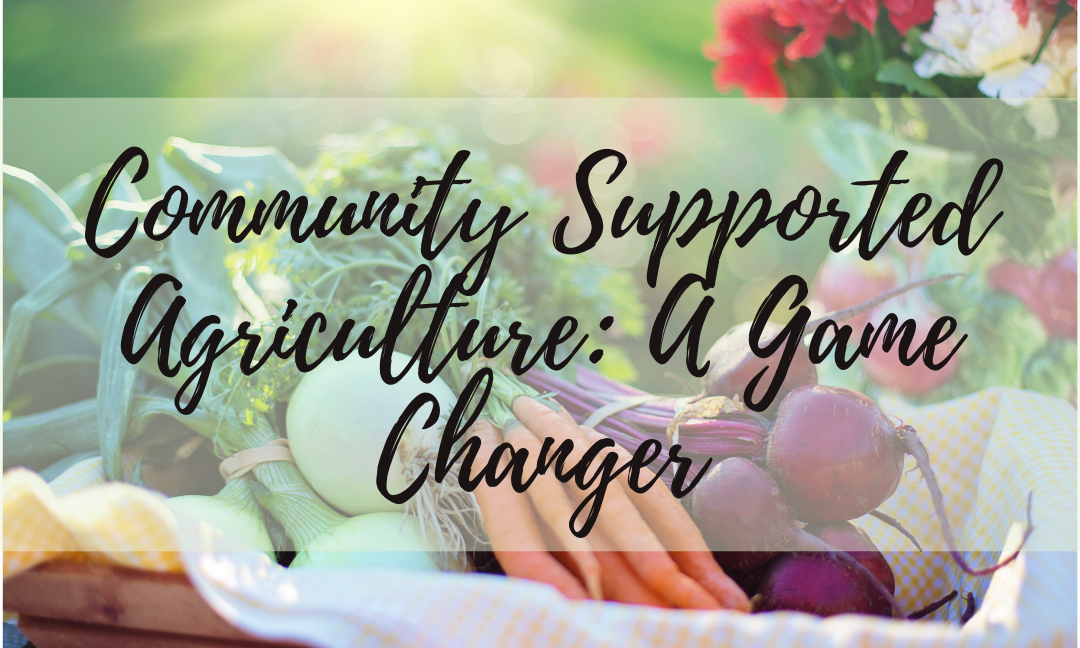Written by: Arhona Bhadra
What is CSA? How did this concept originate?
Community supported agriculture (CSA), often known as cropsharing, is an organized program which enables farmers and the community to work together towards crop production through buying and selling of shares of the year’s harvest. CSA has been well-established in different countries since 1965. Biodynamic agriculture techniques were pioneered in the United States by two farmers, Trauger Groh from Germany and Jan Vander Tuin from Switzerland. A community supported agricultural project named Topinambur was founded by Vander Tuin near Zurich, Switzerland. This influenced the creation of two separate CSAs in 1986 in the US. The coinage of the term “community supported agriculture” was officially recognized in the northeastern United States in the 1980s.
How does CSA work?
The following steps are involved in the functioning of a traditional CSA:
- Early in the year during spring, farmers connect with registered members to sell CSA shares. This occurs prior to the planting of crops to ensure detailed pre-planning.
- Interested members buy a share (known as “membership” or “subscription”) of the year’s harvest. However, besides the share, farmers also distribute the risks and benefits of food production among the members and themselves.
- Farmers then use the received money to purchase the necessary materials such as seeds, compost, tools, etc. At times, CSA shareholders are also responsible for providing funds during the growing season.
- After harvesting, the members start receiving vegetables, fruits, meat and other farm products regularly. They are usually provided boxes or baskets packed with freshly washed harvested vegetables, including at least 8 seasonal items.
- The CSA offers pickup and delivery options for the members at a designated location and time every week.
Are there different types of CSAs?
Many modifications have been made to the traditional CSA model. As CSAs continue to evolve, it has become more suitable for the needs of both the farmers and the consumers. The most common types of CSAs include:
- Traditional CSA: Farmers sell shares of the harvest to interested members, who would receive their crops at the end of the growing season at a predetermined location and time.
- Multi-Farm CSA: Farmers focus on growing a small number of crops very well, rather than growing large varieties of crops. Therefore, a group of farmers discuss marketing, planning, harvesting, packing and distributing a CSA box before planting the crops.
- Market-Style CSA: The members visit the farm or a different location to collect and pack their own boxes. Each week’s share is either absolutely predetermined for each member, partially predetermined or completely determined by the members themselves. This model reduces the cost of packaging and delivering to each member individually.
- Flexible-Week CSA: Members are able to choose a period of time or the number of weeks that they want to receive CSA shares. This allows members to go on vacations without worrying about an excess amount of rotten food items at their designated pickup or delivery location.
- California-Style CSA: This CSA model is the most popular in places that have growing seasons throughout the year (e.g. California as the name suggests). Instead of an upfront payment for many weeks’ shares, members are charged a payment according to the shares bought every week. Members can also put their boxes on hold, enabling them to go on vacations.
Pros and Cons of CSA
The advantages of CSA are as follows:
- Farmers can have their payment before planting their crops. They would not need to take loans that could only be paid off based on how much crops are sold in the market.
- Farmers would be able to plan before planting their crops because they have an estimate of how many customers they have and how much crop needs to be harvested for each week.
- Consumers could have better access to fresh and healthy crops and other food items. On the other hand, some food items in a grocery store are imported from other countries or provinces/territories. This requires the food to be preserved artificially.
- Consumers would be able to buy products at the same price every week. In contrast, a supermarket or grocery store continually changes their prices and deals for food items.
The disadvantages of CSA are as follows:
- The farmers’ income depends on the number of members, which could be significantly less than the number of consumers in the market and the actual value of their harvests.
- The amount and quality of produce would entirely depend on the season and the type of CSA. On the contrary, in a grocery store, people could purchase high-quality food items that may or may not have been imported from a different location.
- In a particular CSA, members can only get certain varieties of crops and other food items. Whereas, by going to just one supermarket or grocery store, one could have access to huge varieties and amounts of food items.
- Some CSAs deliver boxes or baskets that would contain specific amounts and varieties of food items predetermined by the CSAs, instead of the members themselves. This could, at times, be problematic for the members because the boxes each week might have more than sufficient food items. Thus, members would have to store the surplus food, eventually causing them to rot.
CSAs in Waterloo Region
- Nith Valley Organics [www.nithvalleyorganics.ca]
- Pfennings Organic [www.pfenningsorganic.ca]
- Green Hart Farms [www.greenhartfarms.ca]
- Fertile Ground Farm [www.fertilegroundcsa.com]
- The Working Center (Hacienda Sarria Market Garden) [garden.theworkingcentre.org]
- Little Fields Farm [www.littlefields.farm]
- New Leaf Market Garden [www.newleafmarketgarden.ca]
- ReRoot Organic [www.reroot.ca]
- Young City Growers [youngcitygrowers.org]
References:
http://csafarms.ca/what-is-a-csa/
http://csafarms.ca/how-does-it-work/
https://organicweek.ca/community-supported-agriculture-csa/
https://en.wikipedia.org/wiki/Community-supported_agriculture
https://www.nal.usda.gov/afsic/community-supported-agriculture
https://www.canr.msu.edu/news/principles_and_benefits_of_community_supported_agriculture



